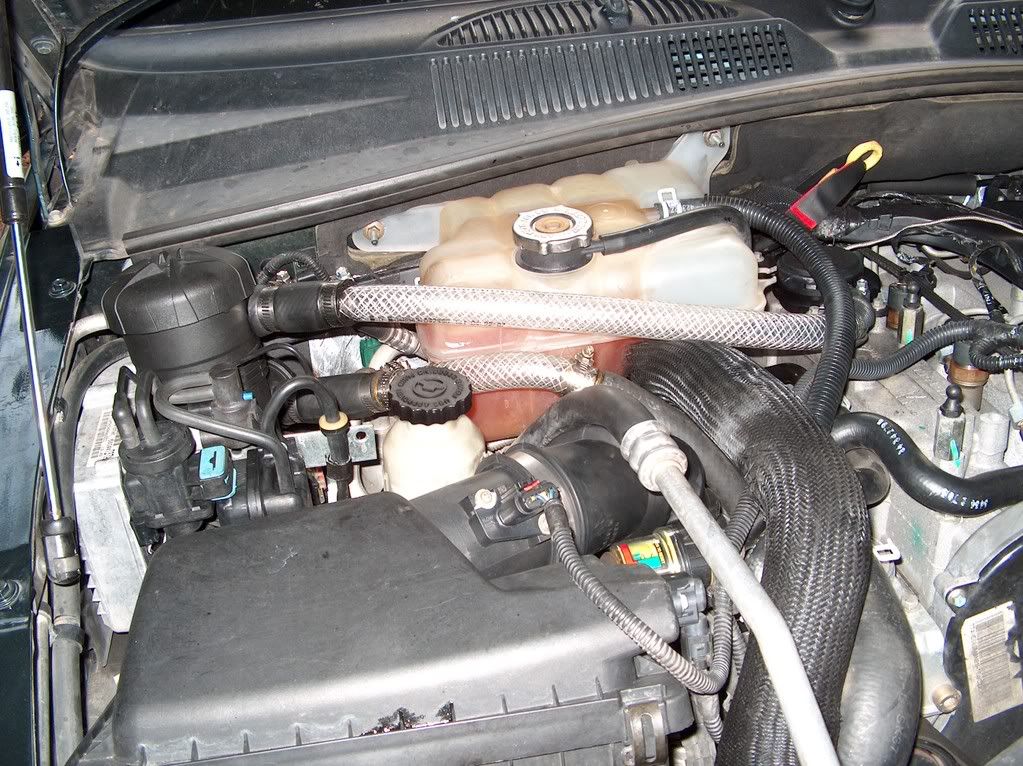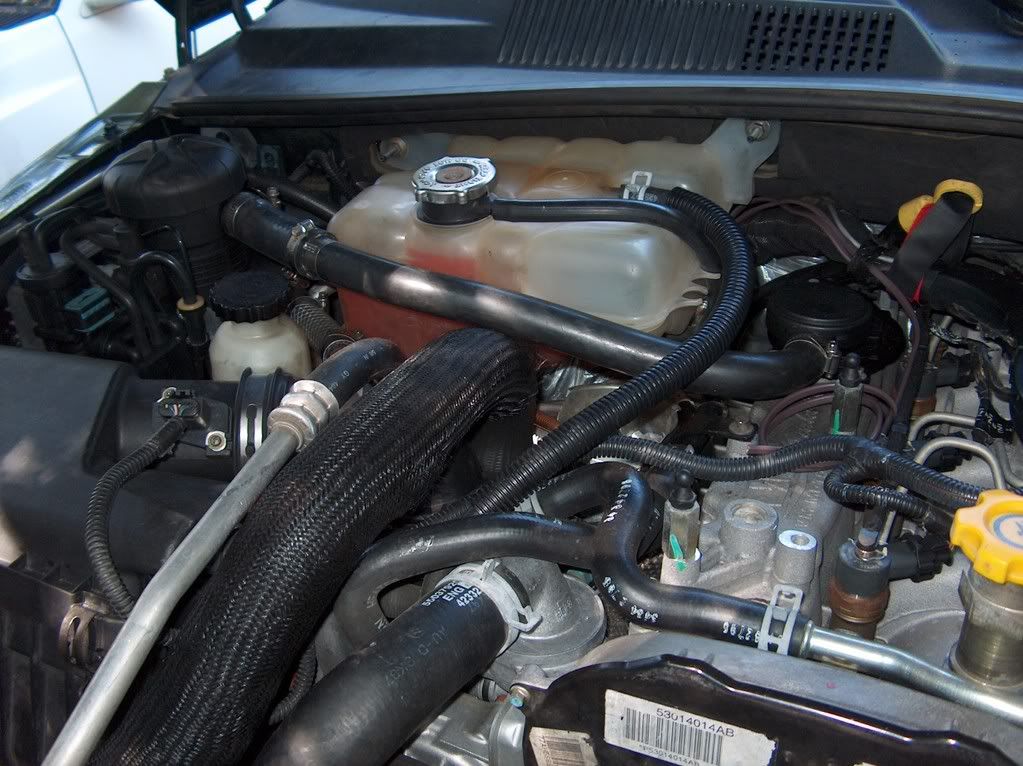Good news - Ford has just approved the Provent CCV system for dealer-install on their Diesel pickups, which means it has been certified by EPA
The Provent system is a crankcase ventilation filter that removes most of the oil from blowby gasses, allowing very dry gasses into the intake system, very necessary where a charge-air cooler is also installed - designed by Mann in Germany, it has been used aftermarket on the VW TDI and other turbocharged Diesel engines in Europe and America to keep the intake system from sludging up from EGR applications, or just to keep the oil out of the cac and intake system - commonly in use on the VW TDI, it is also being used on the Jeep Diesels for the same purpose - no reason you guys couldn't install the system on the 6.5TD systems to clean up your intakes
Insert it between the CDR and the turbo inlet, then plumb the drain back into the crankcase, and you'll lose very little oil between changes - some put a closed drain with specific drain intervals - others leave the drain open, so their vehicle can mark it's territory - usually sells for ~145bucks here, and Racor has similar systems - some have even kludged up their own version outta PVC piping and 3M mesh to save bucks
Search Mann-Provent for more info
Shown is a preliminary Jeep install with clear tubing to prove operational efficiency - the upper hose should turn black from raw blowby, the lower hose should remain clear, and does so - the drain is plumbed into the block above the oilpan

and here is the final version with short clear section in the lower return tube for observation

The Provent system is a crankcase ventilation filter that removes most of the oil from blowby gasses, allowing very dry gasses into the intake system, very necessary where a charge-air cooler is also installed - designed by Mann in Germany, it has been used aftermarket on the VW TDI and other turbocharged Diesel engines in Europe and America to keep the intake system from sludging up from EGR applications, or just to keep the oil out of the cac and intake system - commonly in use on the VW TDI, it is also being used on the Jeep Diesels for the same purpose - no reason you guys couldn't install the system on the 6.5TD systems to clean up your intakes
Insert it between the CDR and the turbo inlet, then plumb the drain back into the crankcase, and you'll lose very little oil between changes - some put a closed drain with specific drain intervals - others leave the drain open, so their vehicle can mark it's territory - usually sells for ~145bucks here, and Racor has similar systems - some have even kludged up their own version outta PVC piping and 3M mesh to save bucks
Search Mann-Provent for more info
Shown is a preliminary Jeep install with clear tubing to prove operational efficiency - the upper hose should turn black from raw blowby, the lower hose should remain clear, and does so - the drain is plumbed into the block above the oilpan

and here is the final version with short clear section in the lower return tube for observation

Last edited:
